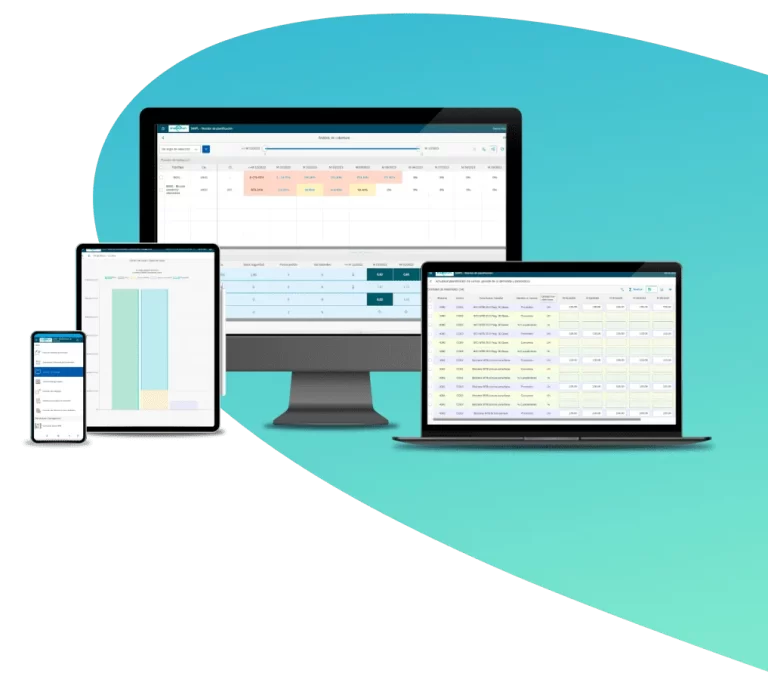How to move from SAP Tx ME21N to a next level source to pay (S2P) process
What are we going to talk about?
Why and how to evolve your source-to-pay processes in SAP into the digital transformation, identifying the widely recognized goals and challenges in this path, based on reports from Mackinsey & CO and Google Cloud.
Digitize is mandatory, natural evolution of S2P processes
In the article of McKinsey & CO titled «A road map for digitizing source-to-pay» (https://www.mckinsey.com/capabilities/operations/our-insights/a-road-map-for-digitizing-source-to-pay), they states, «By applying a new form of analysis to the hundreds of individual tasks involved in the source-to-pay process, we found that nearly 60 percent of them have the potential to be fully or largely automated using currently available technologies… not only in transactional activities, such as order and invoice processing, but also in sourcing’s strategic elements, such as vendor selection and management.”
It’s from 2017, but most companies still need to improve their source-to-pay process, particularly the ones we’re talking about, companies using SAP, both SAP ECC and even the latest SAP S/4HANA.
As mentioned in this article, there are good examples of digitization in consumer purchasing, such as automatically buying cartridges when your printer is low on ink, but it’s not the same story for large enterprises. Of course, the end-to-end source-to-pay process involves different and more complex scenarios that just buy the same cartridge, to the same vendor, at the same time.
The article goes on to analyze the list of tasks that have been done and the potential of new technologies to improve and automate them, but I just want to take the statement about the potential that exists, and a good reason to start down this path, because they find that “Industry benchmarks suggest that most organizations waste 3 to 4 percent of their overall external spend on excessive transaction costs, inefficiency, and noncompliance” and that, is a lot of money as total external spend for an average company that run in SAP.
The Goals
So, what do we look for when trying to digitize S2P processes?
There are some «musts» that we have found to be common goals in advanced S2P processes. Some of these are trends that are becoming mandatory for any process undergoing digital transformation today, while others are particularly relevant to S2P process.
Visibility
Sourcing and procurement are processes that touch almost every part of an organization, whether as a requester of goods or services, a buyer responsible for managing the purchase, or any other interested party.
In addition, the volume of items processed by a large organization monthly is enormous, and the minimum steps of the process (from requisition, purchase order, release, goods receipt and invoice) with key information associated such as vendor, dates, days in each step, should be presented to all stakeholders in an understandable way.
This visibility enhances the expediting process in several ways and eliminates a great deal of time spent on phone calls and e-mails responding to «what’s the status of my goods» questions.
Giving vendors the option to see and check their pending deliveries beyond just an email is another important feature.
User experience
With massive transactions, the user experience becomes more than just an aesthetic feature. It is necessary because a modern, intuitive, and clever UX is the best way to reduce errors and rework. A good way to save time is to avoid overwhelming users with multiple fields that are not required, not mandatory, or in some cases always have the same value and can be resolved with variants or rules.
In this jungle of items and documents, it is imperative to have clarity and understanding of the information with the ability to see «just what I need” for each stakeholder.
Data driven decisions
Sourcing and purchasing decisions need to be based on real data. Eliminate the need for complex Excel spreadsheets by selecting suppliers based on specific criteria that can be analyzed and, in some cases, automatically scored, including price, best delivery time, financial statements, local support, warranty period, and more.
Decisions to approve, return, or reject documents must go beyond simply clicking a red or green button. You need to analyze historical pricing behavior, process risks (split purchases, unreferenced documents, etc.), purchase cycles, inventory levels, and historical supplier relationships.
Much of this information already exists in SAP. However, it needs to be simplified, grouped, and presented in a simple, unified way.
Easy and massive RFI / RFQ
Typically, and in the right sense, core spend (direct purchase where consolidate 80% – 90% of spend) require large and extensive RFI and RFQ process to get the contracts, fixed suppliers, and therefore is typically invested with an approach focused on serving just this and important segment.
However, the long-tail spend “also called C-material spend, tail spend comprises 80-90% of all purchased items—primarily low-volume and often one-off or infrequent orders that go out to a wide array of suppliers” (from the article “Long tail, big savings: Digital unlocks hidden value in procurement” (https://www.mckinsey.com/capabilities/operations/our-insights/long-tail-big-savings-digital-unlocks-hidden-value-in-procurement) represent a significant opportunity to save money (between 5% – 10%, according to the same article).
With that in mind, the goal is to create simple RFI and RFQ processes in order to get the most out of the process through competition. The more purchases through RFQ, of course in an easy and fast way, the more chances of savings, and automated and auditable decisions. We will take a closer look at the long tail and bidding processes in a future article.
Collaboration
Suppliers are key business partners in the supply chain process. It is important to enable a technology solution that provides a friendly, two-way, and easy communication channel for new orders, delivery dates, potential delays, and delivery scheduling. This helps avoid bottlenecks in the warehouse and ensures smooth operations.
Challenges
Now we have what we need, but what about the obstacles in the way?
Data strategy
Large companies are investing heavily in natural language processing (NLP) and artificial intelligence (AI) tools. In some processes this is definitely a game changer, but in much of the S2P data (supplier master data, material data) is already structured and stored in SAP. A time and cost effective first step is to focus on ensuring quality and governance in SAP data.
There are two trends in Google Cloud’s Data and AI Trends 2023 report (https://cloud.google.com/blog/products/ai-machine-learning/top-5-data-and-ai-trends-this-year) that caught my attention and I want to bring to this context, and in my opinion they are really related:
- “Show data silos the door”. A really interesting prediction by Andi Gutmans (VP & GM, Google Databases) is that by 2026, 7 PB per second (yeap, PER SECOND) will be generated. And only 10% will be originals, the other 90% will be replicas. A good example should be this article, I could create a pdf, and made it downloadable to replicate to your computer, then you share to 2 or 3 colleagues by email, so there are 2 or 3 copies in the mail server, then downloaded to 2 or 3 laptops, and maybe another Iphone and so on. Instead, you only need to share the URL (thanks for doing that :-)), and all your friends will connect directly to the main source (we contribute to not creating «data contamination» ;-).
The same happens in S2P, business warehouses, export data from ERP’s, all occupied unnecessary storage space in new servers, which now, with integrated efficient technologies, better processing capacity, on-memory technology (in the case of SAP S/4HANA), is more efficient to deploy web applications fully integrated with the main source of data.
- «Usher in the age of open data ecosystem». In the same way, easy integration aims to reduce replication and data isolated in closed databases. Of course, have to consider security all the way (and there are trends and tools to solve it, which are also mentioned in the report).
SAP’s gift and curse: Complexity makes it unfriendly.
SAP ERP (ECC and S/4HANA) are leading software, including functionalities for a wide variety of scenarios, processes, proven in various industries around the world. And is understandable that to satisfy this wide threshold the designs have become more and more complex, with abstract configurations and concepts, but in the end this solve and fix to the scenarios (the gift), but the inseparable mate is the unfriendliness (the curse ☹).
A solution to take advantage of the complexity without being cursed 😊, is to develop applications as another layer over the ERP, where a smart design and UX digest requirements and deliver almost plug and play and friendly solutions, simplifying not only the use, but the deployment, initial configuration and master data maintenance that are a hidden dream killer of many SAP enhancement projects.
Transactional work is as important as charting and KPI’s.
Many companies have spent a lot of money and focused on business intelligence solutions, analytics, reporting, and KPI creation. Taking for granted that the transactional data, from which all of the above will be built, the main source, is being recorded in an easy and structured way with no errors.
The more user-friendly the solutions are to help users in daily transactions, the easier it will be to create intuitive graphs and KPI’s to help make decisions.
Automating tasks, using templates to populate fields, and validating rules for data are all aimed at building a solid foundation of transactional data that requires less handling to be useful.
A final challenge in digitizing S2P processes in SAP is how to reduce transaction navigation: Tx ME51N to create a PR, then ME59N to release, ME21N to create a PO, and so on. Even with standard Fiori APPS, you must navigate between different tiles that became new versions of transactions. So, trying to automate and consolidate functionality in the same screen is a good deal for users.
Bridge-building, how to move from old-style ME51N transaction to a purchase ninja process
Along the lines of the McKinsey article «A road map for source-to-pay digitization,» they establish: “For companies, the next step is to identify the best targets for automation within their own processes. Organizations can do this by first evaluating the current level of automation they have implemented, compared with what is technically achievable for each task in the source-to-pay process. They can then estimate the value of closing each gap.”
In the S2P steps, from master data, through PR, RFI, RFQ, PO, releases, good receipt, invoicing, could be different levels of requirements for automation, improvement, so segmentation is always a good approach.
Recognizing that must clean the house as the first step, be sure that master data is ok, transactional operations are easy to handle, integrated, friendly. With this foundation, can go to the next level, through full automation of processes. Knowing where to define the tasks to be automated and the rules and criteria on which to base them, taking advantage of trend technologies such as smart workflows, RPA, AI. And all this does not need to be a long path of pain, initiating the digitization of S2P through ready to use add-ons with web base, Fiori or SAP BTP integration is an efficient way.
Then, as the McKinsey article “A road map for source-to-pay digitization» says, “Even more important, by freeing sourcing personnel from routine tasks, automation allows them to spend time pursuing innovative sources of additional value”.
And finally, to underscore why efforts to digitize S2P processes make sense, the same article states: “The digital landscape is moving quickly. Companies that are prepared to experiment while taking a thoughtful, focused approach to the application of these technologies are likely to reap savings worth as much as 3.5 percent of all external spend.”
Our solution
Yes, sorry, I’m going to finish marketing our solutions. If you want to leave at this point, I can understand. But be honest, if you’re still here, you want to know how we can help you deal with this whole mess 😊.
In Innova through the experience of thousands of users, and hundreds of companies in different industries, we had developed a suite of solutions, delivery as Apps that almost plug and play (in a SAP Context) can be implemented by Add-ons and deployed in almost every architecture: web in Front-End servers, SAP Fiori or SAP BTP.
Our Apps add an amazing user experience, enhance functionality, and add validations through almost all the steps in the Source-to-pay processes:
Master Dada:
- SiDM Materials
- SiDM Vendors (SAP ECC) or SiDM BP (S/4HANA)
Purchasing:
- SiTRACK tracks the entire source-to-pay process, from creating a purchase requisition, evaluating each step through approval, bidding processes, PO, goods receipts, and invoice. It has a lot of functions to manage and expedite the purchases.
- SiGO Tender processes, to create RFI and RFQ’s, invite vendors to a portal to upload their bids, automatically compare and evaluate, propose a winner, and can create the PO.
- SiLI Smart releases, to review and approve purchasing documents (PR, PO, Contract and SES) with analysis and mobility.
Warehousing:
- SiGE Delivery Scheduling, to guide suppliers to schedule the date and time of delivery and avoid bottlenecks in warehouses.
- SIMA Warehouse movements, a warehouse operation with full mobility, 100% paperless and supports such as photo record, digital signature and geolocation.
SRM:
- SiPORTAL, a supplier portal to communicate about PO’s, confirmations, status, receivables, options to upload invoices. In S2P it is a step forward to the necessary collaboration.
Feel free to schedule a demo of our apps and see you in the next article.
AI tools such as ChatGPT, Deepl and Microsoft Designer were used in the creation of this article for the purpose of translation and grammar correction.






